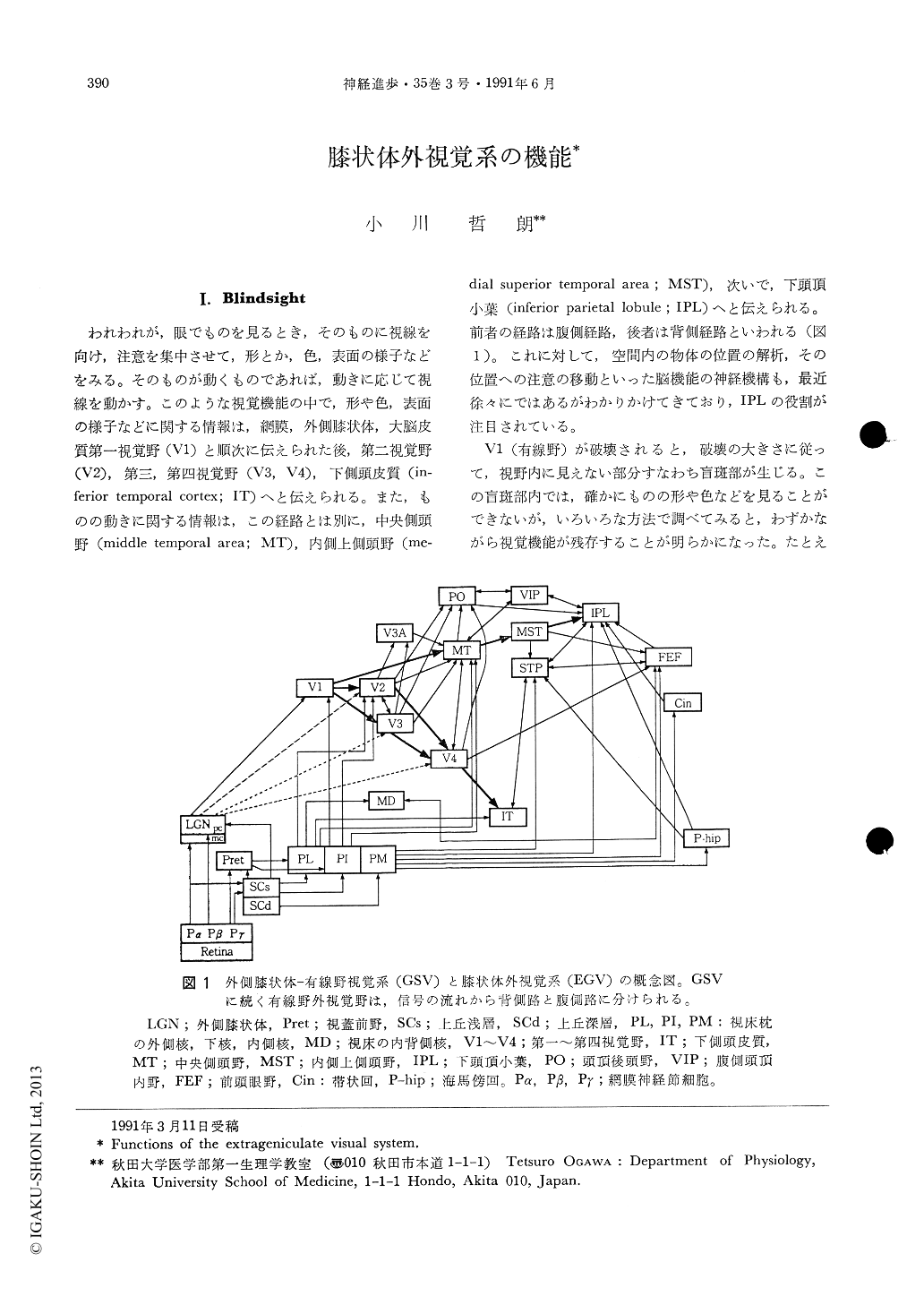Japanese
English
- 有料閲覧
- Abstract 文献概要
- 1ページ目 Look Inside
I.Blindsight
われわれが,眼でものを見るとき,そのものに視線を向け,注意を集中させて,形とか,色,表面の様子などをみる。そのものが動くものであれば,動きに応じて視線を動かす。このような視覚機能の中で,形や色,表面の様子などに関する情報は,網膜,外側膝状体,大脳皮質第一視覚野(V1)と順次に伝えられた後,第二視覚野(V2),第三,第四視覚野(V3,V4),下側頭皮質(inferior temporal cortex;IT)へと伝えられる。また,ものの動きに関する情報は,この経路とは別に,中央側頭野(middle temporal area;MT),内側上側頭野(medial superior temporal area;MST),次いで,下頭頂小葉(inferior parietal lobule;IPL)へと伝えられる。前者の経路は腹側経路,後者は背側経路といわれる(図1)。これに対して,空間内の物体の位置の解析,その位置への注意の移動といった脳機能の神経機構も,最近徐々にではあるがわかりかけてきており,IPLの役割が注目されている。
V1(有線野)が破壊されると,破壊の大きさに従って,視野内に見えない部分すなわち盲斑部が生じる。この盲斑部内では,確かにものの形や色などを見ることができないが,いろいろな方法で調べてみると,わずかながら視覚機能が残存することが明らかになった。
Considerable visual abilities survive damage to striate cortex in primates. These spared abilities, collectively referred to as blindsight, suggest that there are extrageniculate visual pathways (EGV) besides the geniculostriate visual pathway (GSV).
Visual information reaching the striate cortex is further processed along two separate cortico-cortical pathways; the dorsal pathway consisting of V1-MT-MST-IPL and the ventral pathway consisting of V1-V2-V4-IT. The ventral pathway concerns itself primarily with color and pattern vision and the dorsal one is involved in processing visuomotor integration, movement of objects and selective attention. The dorsal pathway is anatomically more closely related to EGV and the ventral one is completely dependent on GSV. In this article I reviewed a role played by EGV, emphasizing that it is involved in selective attention and visuomotor integration.

Copyright © 1991, Igaku-Shoin Ltd. All rights reserved.


